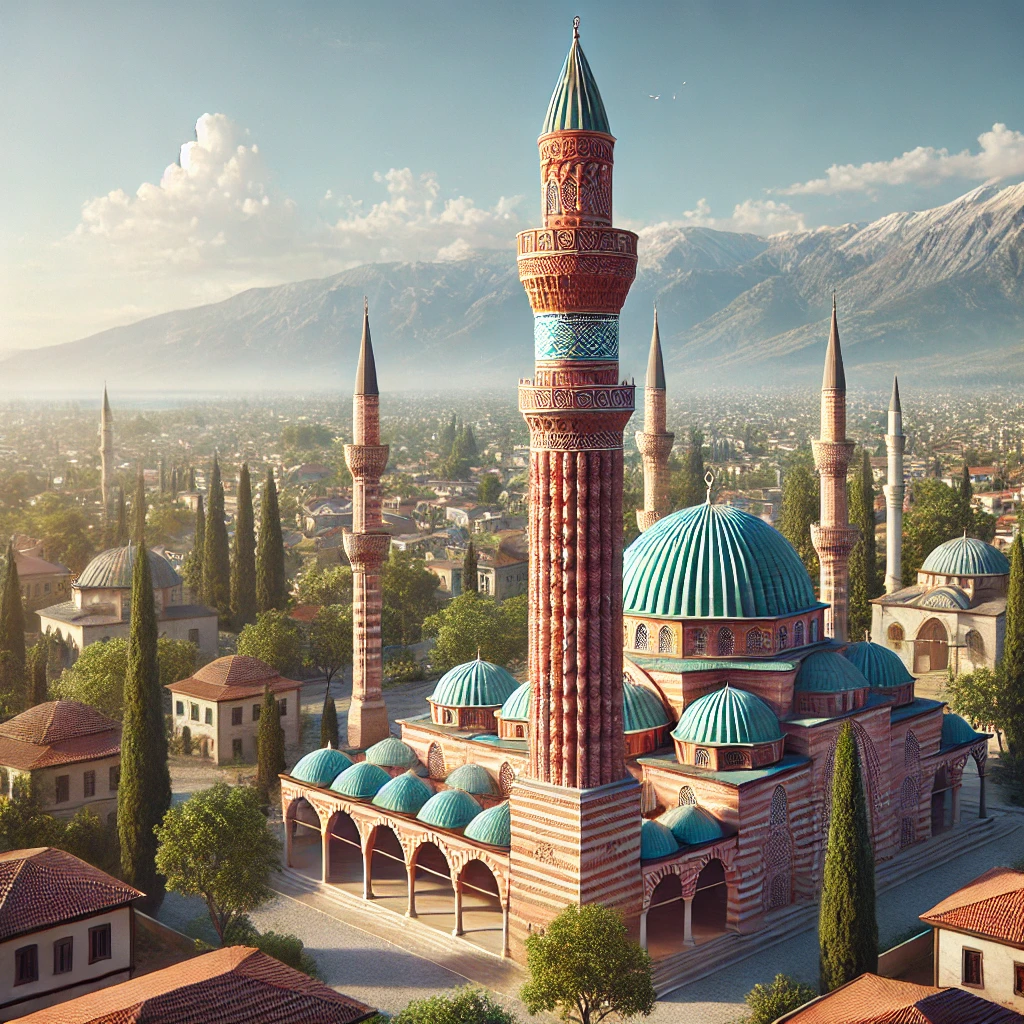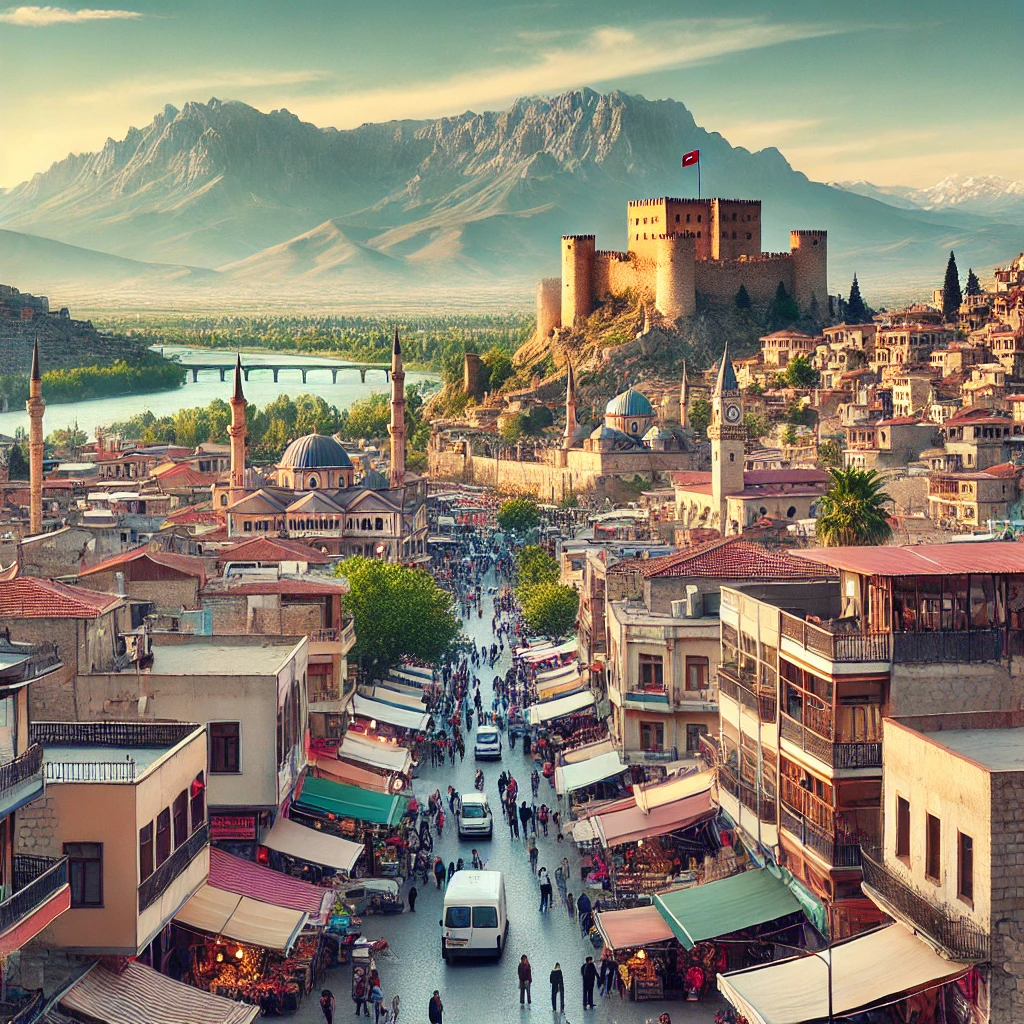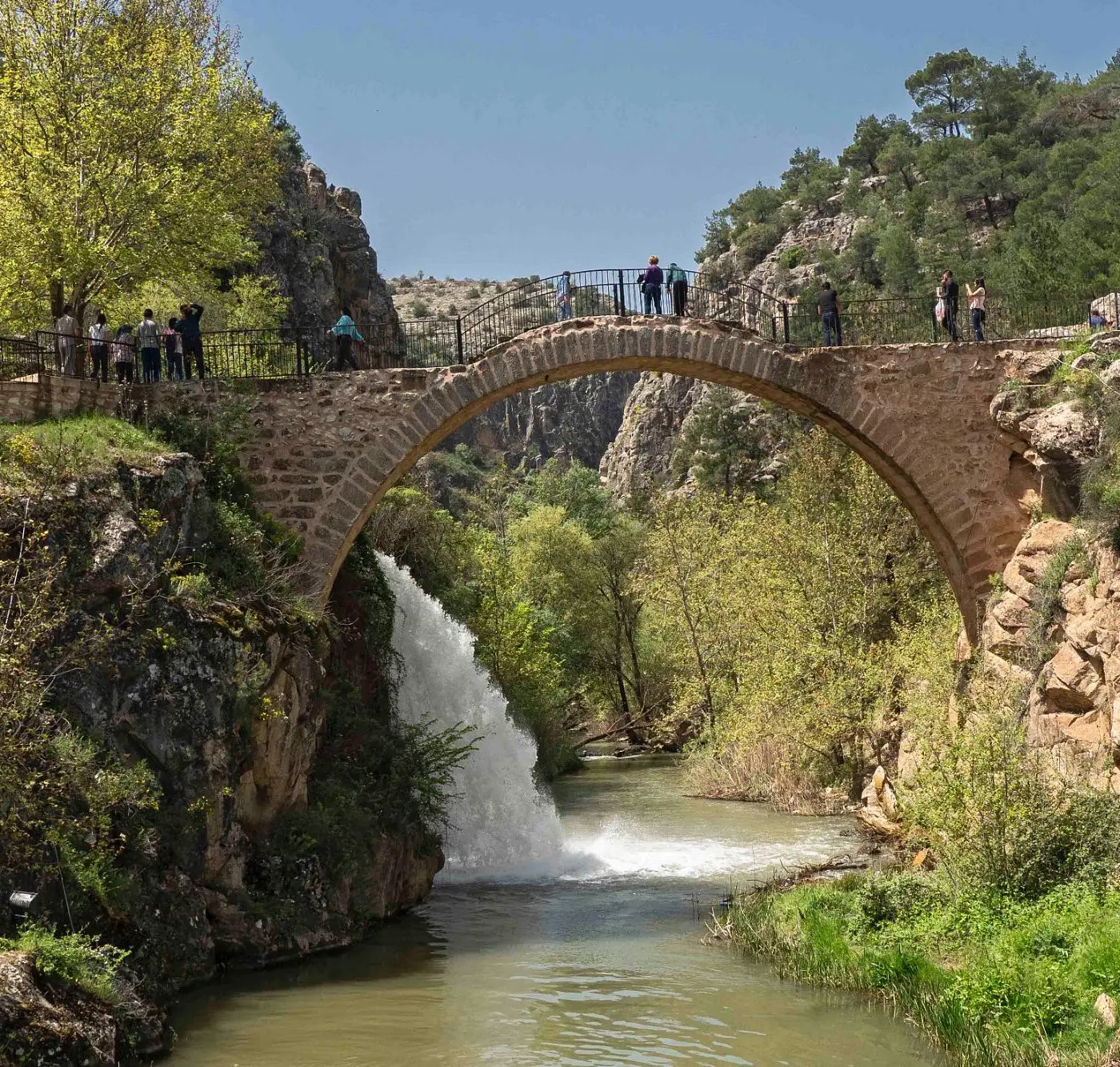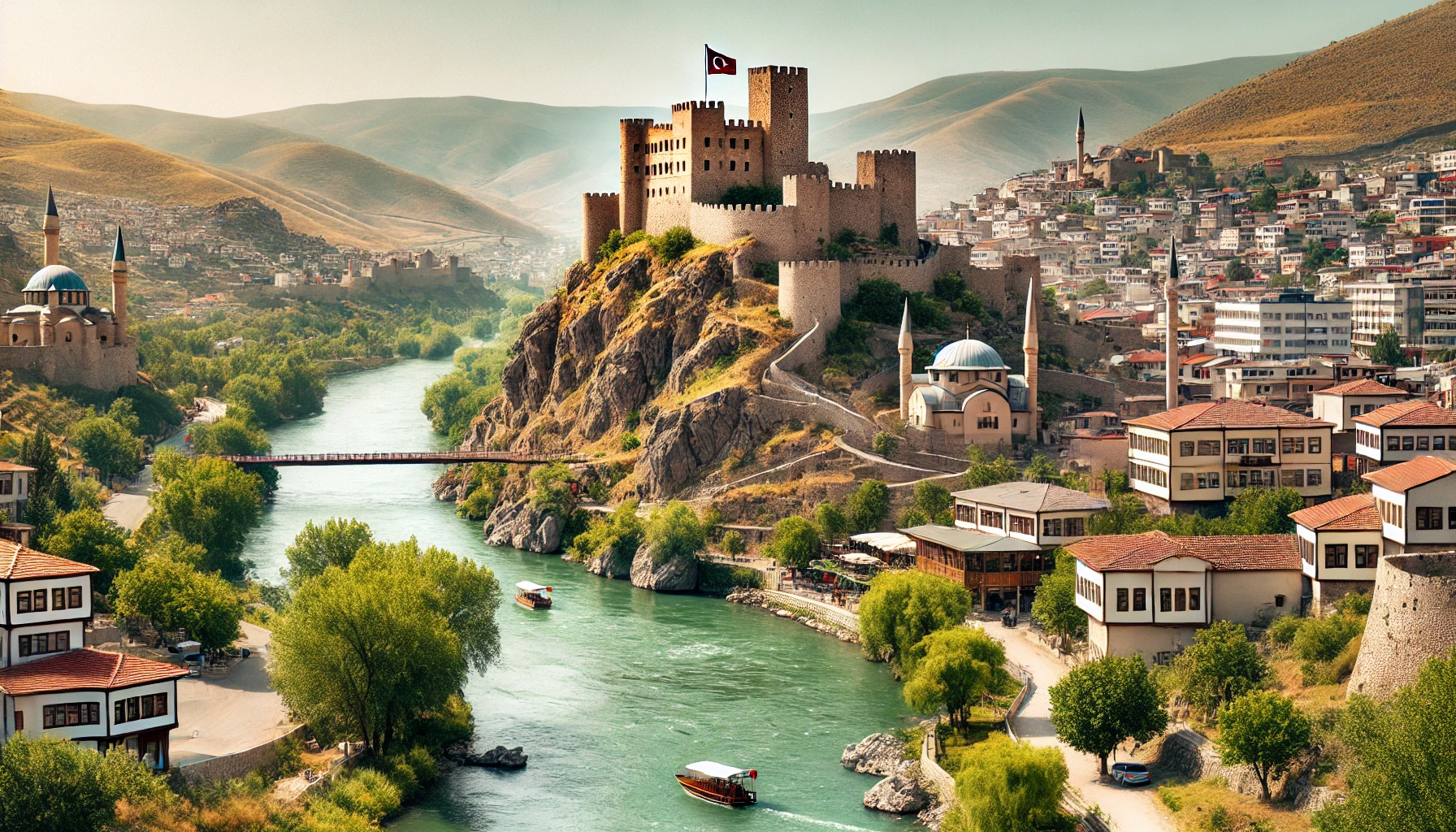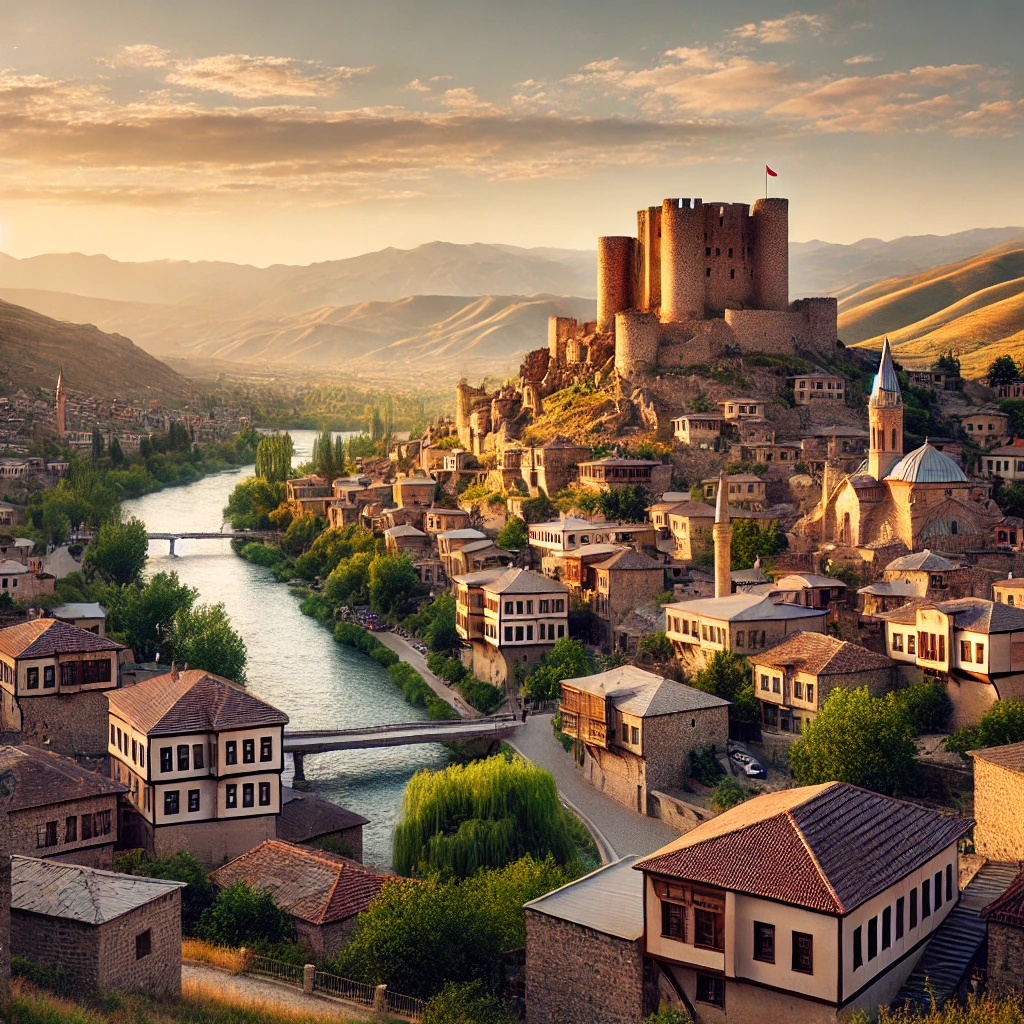The Grooved Minaret: An Architectural Marvel of the Seljuk Era
The Yivli Minaret Mosque in Antalya is not just a place of worship; it is a significant historical monument that represents the grandeur of Seljuk architecture. Standing tall in the heart of Antalya’s city center, the Yivli Minaret, often referred to as the “Grooved Minaret,” is one of the most iconic symbols of the city. This article delves into the fascinating history, architectural brilliance, and cultural significance of the Yivli Minaret Mosque, making it a must-read for travel enthusiasts and history buffs alike.
The Historical Significance of Yivli Minaret Mosque
The Transformation from Church to Mosque
The Yivli Minaret Mosque’s origins are deeply rooted in the history of Antalya. Originally built as a church during the Byzantine period, the structure was converted into a mosque by the Seljuk Sultan Alaeddin Keykubad I in 1230. This transformation is a testament to the region’s rich cultural and religious history, where different civilizations have left their mark. The mosque’s conversion was not just a religious act but also a reflection of the Seljuk Sultanate’s power and influence in the region.
The Role of Alaeddin Keykubad I
Sultan Alaeddin Keykubad I, who reigned during the early 13th century, was instrumental in expanding the Seljuk Empire’s territories. His decision to convert the church into a mosque was a strategic move to assert Seljuk dominance in Antalya, which was a crucial city for trade and military operations. The Yivli Minaret Mosque thus became a symbol of Islamic power and architectural prowess in the region.
Architectural Brilliance of Yivli Minaret
The Minaret: A Masterpiece of Seljuk Design
The Yivli Minaret stands at an impressive height of 38 meters, making it one of the most prominent Islamic structures in Antalya. The minaret’s design is a striking example of Seljuk architecture, characterized by its grooved body made of brick and Khorasan mortar. The eight semi-cylindrical grooves that run along the minaret’s body give it a unique, ribbed appearance, which is both elegant and structurally sound.
The Use of Brick and Tiles
One of the most remarkable aspects of the Yivli Minaret is its construction materials. The minaret is primarily made of brick, a material that was commonly used in Seljuk architecture for its durability and aesthetic appeal. The use of turquoise-colored tiles adds a vibrant contrast to the brickwork, creating a visually stunning effect. These tiles were intricately arranged to form geometric patterns and inscriptions, although much of the original tilework has been lost to time.
The Pedestal and Staircase
The minaret is built on a solid pedestal made of block-cut stones, which provides stability to the tall structure. Access to the minaret’s interior is through a small door on the north side, leading to a narrow staircase with 90 steps. This staircase winds its way up to the top of the minaret, offering visitors a breathtaking view of the surrounding city and the Mediterranean Sea.
The Yivli Minaret Mosque Complex
The Alaaddin Mosque: A Legacy of Seljuk Architecture
The Yivli Minaret Mosque is part of a larger complex that includes the Alaaddin Mosque, a significant example of Anatolian Turkish architecture. The Alaaddin Mosque, located to the west of the Yivli Minaret, was built on the foundations of the original Byzantine church. The mosque’s design reflects the architectural style of the Seljuk period, with its simple yet elegant form. The mosque’s prayer hall is spacious and features a mihrab (prayer niche) that is beautifully adorned with tiles.
The Multi-Domed Structure of Yivli Mosque
One of the most distinctive features of the Yivli Mosque is its multi-domed structure. Built by Balaban Tavşi in 1372, the mosque is considered the oldest example of a multi-domed mosque in Anatolia. The mosque features six hemispherical domes, which are supported by thick stone columns. This design not only adds to the mosque’s architectural beauty but also serves a practical purpose by evenly distributing the weight of the roof.
Other Structures in the Complex
The Yivli Minaret Mosque complex is home to several other historical structures, including the Yivli Minare Bath, the Gıyaseddin Keyhüsrev Madrasa, the Seljuk Madrasa, the Mevlevihane (a lodge for the Mevlevi dervishes), the Zincirkıran Mehmed Bey Tomb, and the Nigar Hatun Tomb. Each of these structures has its own unique history and architectural significance, contributing to the rich cultural tapestry of the complex.
Cultural and Religious Significance
A Symbol of Islamic Heritage
The Yivli Minaret Mosque is not just an architectural wonder; it is also a symbol of Islamic heritage in Antalya. The mosque has served as a place of worship for centuries, and it continues to be an important religious site for the local Muslim community. The mosque’s minaret, with its call to prayer echoing across the city, is a reminder of the enduring presence of Islam in the region.
The Mosque’s Role in Antalya’s Identity
Over the years, the Yivli Minaret has become one of the most recognizable landmarks in Antalya. Its distinctive silhouette is often featured in postcards, travel brochures, and other promotional materials, making it a symbol of the city’s rich history and cultural diversity. The Yivli Minaret Mosque is a must-visit for anyone looking to explore the historical and cultural heart of Antalya.
Visiting the Yivli Minaret Mosque
How to Get There
The Yivli Minaret Mosque is conveniently located in Kalekapısı, the city center of Antalya. It is easily accessible by public transport, taxi, or even on foot if you are staying in the nearby Kaleiçi district. The mosque is situated near other popular attractions, such as Hadrian’s Gate and the Antalya Museum, making it a perfect stop on a day of sightseeing.
What to Expect When Visiting
Visitors to the Yivli Minaret Mosque can expect to be awed by its architectural beauty and historical significance. The mosque is open to the public, but visitors are reminded to dress modestly and respect the religious practices of those who come to pray. The mosque’s serene atmosphere, combined with its stunning architecture, offers a peaceful retreat from the hustle and bustle of the city.
Nearby Attractions
After visiting the Yivli Minaret Mosque, visitors can explore the surrounding area, which is rich in history and culture. The nearby Kaleiçi district is known for its narrow, winding streets, traditional Ottoman houses, and ancient ruins. The Antalya Museum, which houses an extensive collection of artifacts from the region’s history, is also worth a visit.
The Preservation of Yivli Minaret Mosque
Efforts to Protect and Preserve
The Yivli Minaret Mosque, like many other historical structures, has faced the challenges of time and environmental factors. However, efforts have been made to preserve this architectural gem for future generations. Restoration projects have been undertaken to repair the minaret’s brickwork and tiles, ensuring that it remains a symbol of Antalya’s rich cultural heritage.
The Importance of Preservation
Preserving the Yivli Minaret Mosque is not just about maintaining a physical structure; it is about safeguarding a piece of history that is integral to Antalya’s identity. The mosque is a testament to the artistic and architectural achievements of the Seljuk period, and its preservation allows future generations to appreciate and learn from this rich heritage.
Conclusion
The Yivli Minaret Mosque in Antalya is more than just a historical monument; it is a symbol of the city’s rich cultural and religious heritage. From its origins as a Byzantine church to its transformation into a mosque by Sultan Alaeddin Keykubad I, the Yivli Minaret Mosque has stood the test of time, offering a glimpse into the architectural brilliance of the Seljuk period. Whether you are a history enthusiast, an architecture lover, or simply a traveler looking to explore Antalya’s cultural landmarks, the Yivli Minaret Mosque is a must-visit destination.
For more information on planning your trip to Antalya and exploring other historical sites, visit the Travel Guide of Türkiye.
Latest Update: Aug 11, 2024
Your Content Goes Here
TAGS: Alaeddin Keykubad I, Antalya, Antalya cultural heritage, Antalya historical sites, Antalya landmarks, Antalya travel, Islamic heritage Antalya, Kalekapısı Antalya, multi-domed mosque, Seljuk architecture, Seljuk Sultanate, Yivli Minaret bricks, Yivli Minaret complex, Yivli Minaret history, Yivli Minaret Mosque, Yivli Minaret preservation, Yivli Minaret tiles, Yivli Minaret tourism, Yivli Minaret visit, Yivli Mosque
A brief summary of the key points in this article.
Latest Travel Guides
Weather Today in Yivli Minaret Mosque, Antalya, Turkey
Location: Antalya Province
Temperature: 16.33°C
Condition: Broken clouds

